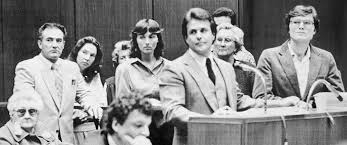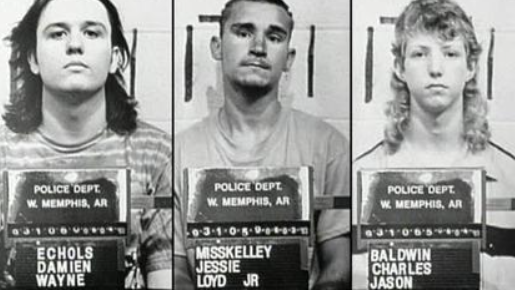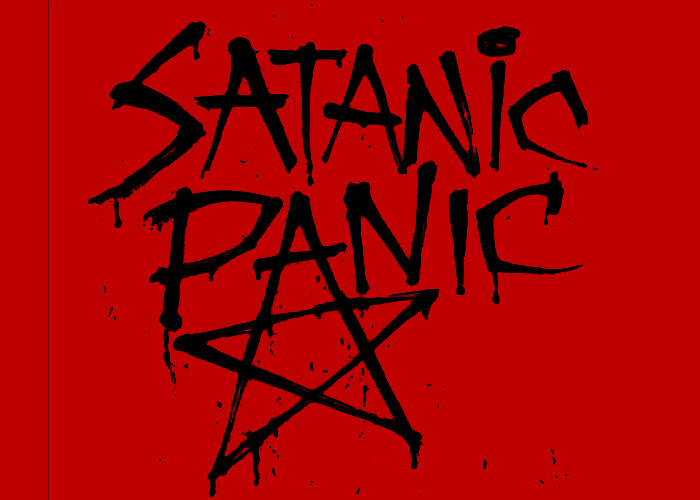The 1980s and 1990s were a time of cultural upheaval, marked by the rise of new technologies, shifting social norms, and a growing sense of uncertainty. Amidst this backdrop, a wave of fear swept across the United States and other parts of the world, fueled by claims of widespread Satanic ritual abuse. This phenomenon, later dubbed the “Satanic Panic,” involved allegations of hidden cults engaging in horrific acts of abuse, often targeting children. These claims led to widespread hysteria, ruined lives, and a lasting impact on society.
In this article, we will explore the origins of the Satanic Panic, the key figures and events that fueled it, and the lasting consequences of this dark chapter in modern history. We will break down the story into sections, summarize key points, and ask questions to help you better understand this complex and troubling period.
Table of Contents
- What Was the Satanic Panic?
- Origins of the Panic
- Key Cases and Locations
- The Role of Media and Pop Culture
- The Psychology Behind the Panic
- The Aftermath and Legacy
- Questions and Answers
- Summary and Reflection
1. What Was the Satanic Panic?
The Satanic Panic was a period during the 1980s and 1990s when many people believed that secret Satanic cults were operating across the United States and other countries. These cults were accused of committing horrific acts, including:
- Ritual abuse of children
- Animal sacrifices
- Murder
- Brainwashing
The allegations often involved daycare centers, schools, and even families. Many people were accused of being part of these cults, leading to arrests, trials, and ruined reputations. However, as time went on, it became clear that many of these claims were based on false memories, unreliable testimony, and outright fabrication.
2. Origins of the Panic
The Satanic Panic didn’t happen overnight. It was the result of several factors coming together at the same time. Let’s break it down:
A. The Rise of Evangelical Christianity
In the 1980s, evangelical Christianity was on the rise in the United States. Many religious leaders warned about the dangers of Satanism and the occult. Books like Michelle Remembers (1980), which claimed to be a true story of Satanic abuse, fueled these fears.
B. The Daycare Abuse Scandals
Several high-profile cases of alleged child abuse at daycare centers captured the public’s attention. These cases often involved bizarre and unbelievable claims, such as secret tunnels, underground rituals, and even spaceships.
C. The Recovered Memory Movement
During this time, some therapists believed that traumatic memories could be “recovered” through hypnosis or other techniques. Unfortunately, these memories were often false, leading to false accusations.
D. Pop Culture and Media
Movies, TV shows, and books about Satanism and the occult added to the fear. For example, the 1973 movie The Exorcist terrified audiences and made Satanism seem real and dangerous.
3. Key Cases and Locations
The Satanic Panic was marked by several high-profile cases that captured national attention. Here are some of the most famous:
A. The McMartin Preschool Trial (1983-1990)

- Location: Manhattan Beach, California
- Details: The McMartin Preschool case was one of the longest and most expensive trials in U.S. history. Several teachers were accused of sexually abusing children in Satanic rituals.

- The allegations included secret tunnels, animal sacrifices, and even flying witches.
- Outcome: After years of investigation and trial, all charges were dropped due to lack of evidence.
B. The Fells Acres Case (1984-1995)
- Location: Malden, Massachusetts
- Details: Three staff members at the Fells Acres daycare center were accused of sexually abusing children. The children’s testimony included bizarre claims, such as being forced to drink urine and participate in rituals.
- Outcome: The defendants were initially convicted, but their convictions were later overturned due to unreliable testimony.
C. The West Memphis Three (1993)

- Location: West Memphis, Arkansas
- Details: Three teenagers were accused of murdering three young boys as part of a Satanic ritual. The case gained national attention and became the subject of several documentaries.
- Outcome: The teenagers were convicted but were later released after new evidence emerged.
4. The Role of Media and Pop Culture
The media played a huge role in spreading the fear of Satanic cults. Here’s how:
A. Sensationalized News Coverage
TV shows like Geraldo and Oprah featured segments on Satanic ritual abuse, often presenting unverified claims as fact. This helped spread the panic to millions of viewers.
B. Books and Documentaries
Books like Michelle Remembers and documentaries like The Devil in Connecticut claimed to expose the truth about Satanic cults. Many of these works were later discredited.
C. Music and Movies
Heavy metal music and horror movies were often blamed for promoting Satanism. Bands like Judas Priest and Ozzy Osbourne were even sued by parents who claimed their music had driven their children to suicide.
5. The Psychology Behind the Panic
Why did so many people believe in something that turned out to be largely false? Here are some psychological factors that contributed to the Satanic Panic:
A. Moral Panic
A moral panic occurs when society becomes overly concerned about a perceived threat. In this case, the threat was Satanism.
B. Confirmation Bias
People tend to believe information that confirms what they already think. If someone already believed in the dangers of Satanism, they were more likely to accept the claims of abuse.
C. False Memories
Therapists using hypnosis or leading questions could inadvertently create false memories in their patients. These false memories often included details of Satanic rituals.
6. The Aftermath and Legacy
The Satanic Panic had a lasting impact on society. Here are some of the consequences:
A. Ruined Lives
Many innocent people were accused of being part of Satanic cults. Some lost their jobs, their families, and even their freedom.
B. Changes in the Legal System
The panic led to changes in how child testimony was handled in court. Judges and lawyers became more cautious about relying on the testimony of young children.
C. A More Skeptical Public
Over time, people began to question the claims of Satanic ritual abuse. This led to a greater awareness of false memories and the dangers of moral panics.
7. Questions and Answers
Q: Was there any truth to the claims of Satanic ritual abuse?
A: While some cases of child abuse did occur, there was no evidence of widespread Satanic cults or ritual abuse. Most of the claims were based on false memories or fabrication.
Q: Why did people believe in something so unbelievable?
A: Fear, misinformation, and the power of suggestion all played a role. When people are scared, they are more likely to believe in unlikely explanations.
Q: What can we learn from the Satanic Panic?
A: The Satanic Panic is a reminder of the dangers of fear and misinformation. It shows how easily people can be swayed by sensational claims and the importance of critical thinking.
8. Summary and Reflection
The Satanic Panic was a dark and troubling period in modern history. It was fueled by fear, misinformation, and the power of suggestion. While the panic has largely faded, its legacy remains. It serves as a cautionary tale about the dangers of moral panics and the importance of questioning what we are told.
As we look back on this period, it’s important to remember the lives that were ruined and the lessons that were learned. By understanding the Satanic Panic, we can better guard against similar episodes in the future and ensure that justice is based on evidence, not fear.
This article provides a comprehensive overview of the Satanic Panic, breaking down the key events, people, and psychological factors that contributed to this troubling period. By exploring the story in detail, we can better understand how fear and misinformation can shape society—and how we can prevent it from happening again

